Menu
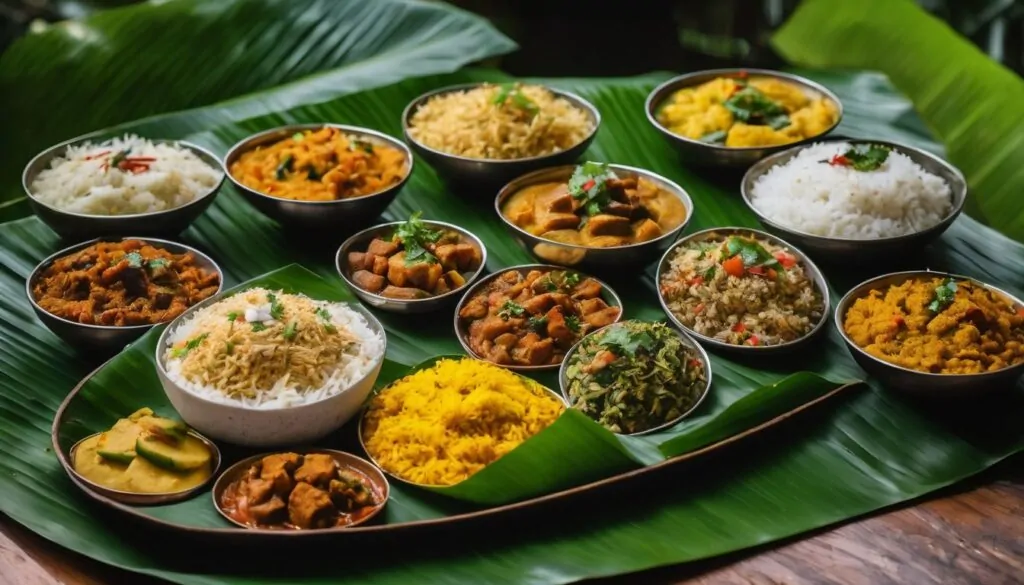
A culinary Journey Through Sri Lanka.
Sri Lankan cuisine is a vibrant tapestry of flavors, reflecting the island’s rich cultural heritage. A fusion of indigenous, Indian, Arab, and Portuguese influences, it offers a diverse range of dishes that tantalize the taste buds. From spicy curries to aromatic rice dishes, Sri Lankan food is a celebration of bold flavours and fragrant spices.
The Uniqueness of Sri Lankan Cuisine
What sets Sri Lankan cuisine apart is its emphasis on fresh, locally sourced ingredients and the skilful blending of spices. The island’s tropical climate and fertile soil produce an abundance of fresh fruits, vegetables, and herbs, which form the foundation of many dishes. The generous use of spices like cardamom, cinnamon, cloves, and black pepper creates a symphony of flavors that is both complex and satisfying. Moreover, Sri Lankan cuisine incorporates a variety of cooking techniques, including grilling, roasting, steaming, and fermenting, resulting in a diverse culinary landscape.
Properties, Health Benefits, and Taste
Sri Lankan food is not only delicious but also incredibly healthy. The abundance of fresh produce, coupled with the use of spices known for their medicinal properties, makes it a nutritious choice. The emphasis on coconut oil, a staple in Sri Lankan cooking, provides essential fatty acids and contributes to the dishes’ rich flavor.
The flavors of Sri Lankan cuisine are bold and vibrant, with a perfect balance of sweet, sour, spicy, and savory. The use of fresh herbs and spices creates a symphony of aromas that tantalize the senses. The dishes are often accompanied by rice or various types of bread, providing a satisfying and filling meal.
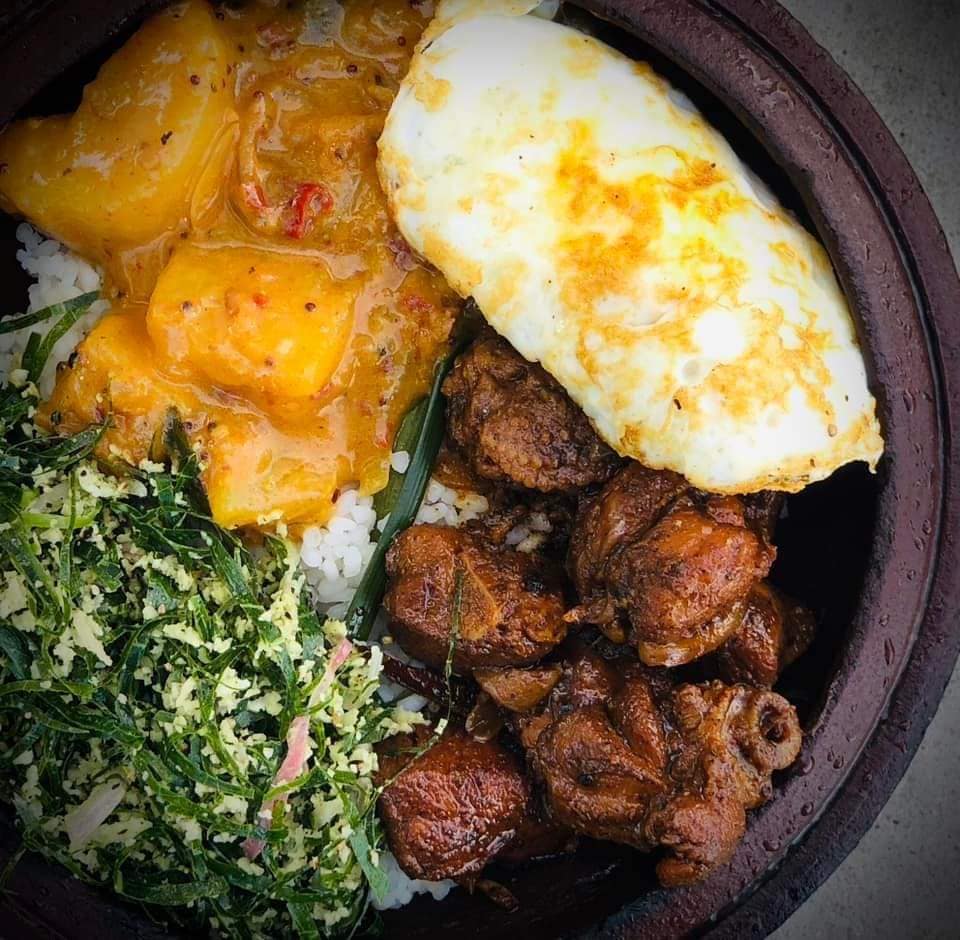
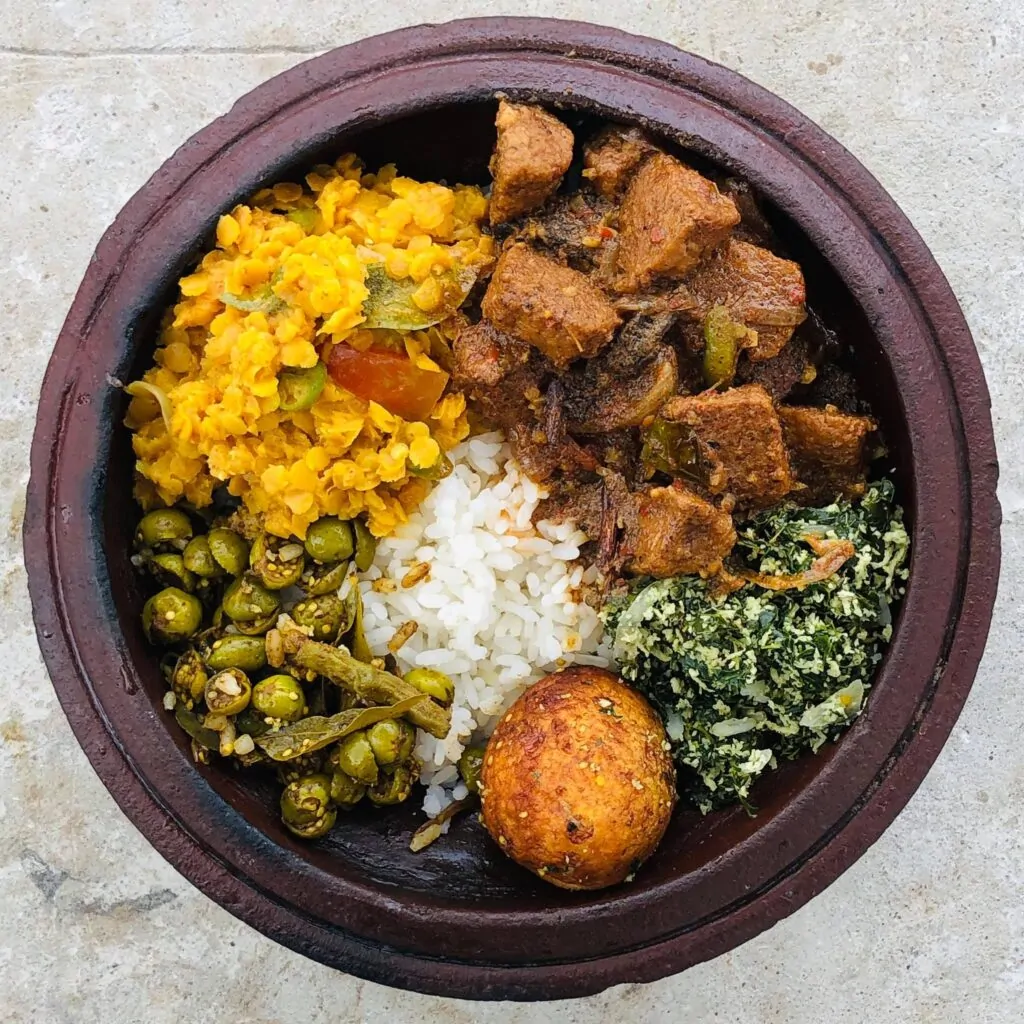
A Culinary Exploration by Region
Sri Lankan cuisine varies from region to region, reflecting the local ingredients and cultural influences.
Coastal Region: Known for its seafood delicacies, the coastal cuisine features dishes like crab curry, fish ambul thiyal (sour fish curry), and prawn moju (prawn pickle). Coconut milk is used extensively in coastal cooking, adding richness and creaminess to the dishes.
Southern Region: The southern region is famous for its spicy cuisine. Dishes like fish curry with red chilies, sambols infused with hot peppers, and tangy tamarind-based curries are common.
Northern Region: Influenced by Indian cuisine, the northern region offers a variety of vegetarian and vegan options. Dosa, idli, and vada are popular breakfast choices, while lentil curries and vegetable stir-fries are staples.
Hill Country: The cool climate of the hill country has influenced the cuisine, with a focus on hearty and warming dishes. Potato curry, string hoppers, and various types of bread are common.
Kandy Region: Kandy cuisine is known for its sweet treats and desserts. Watalappan, a rich custard pudding, and kevum, a crispy coconut-based sweet, are specialties.
Eastern Region: The eastern region offers a blend of Sinhalese and Tamil influences. Seafood is abundant, and dishes like fish curry with coconut milk and brinjal moju (eggplant pickle) are popular.
Anuradhapura Region: Known for its ancient ruins, Anuradhapura also offers a unique culinary experience. Rice and curry dishes with a focus on local vegetables and spices are common.
Sri Lankan Lamprais
A Dutch-influenced dish, lamprais is a delightful blend of flavors. It consists of rice cooked in spices, accompanied by meat or fish curry, sausages, and a fried egg, all wrapped in banana leaf and baked. The combination of flavors and textures makes lamprais a truly unique culinary experience.
Milk Rice with Somble Fish Ambulthiyal
This classic Sri Lankan combination features creamy milk rice paired with the tangy and spicy flavors of ambulthiyal, a sour fish curry. The contrast between the mild sweetness of the milk rice and the bold flavors of the fish curry creates a perfect balance.

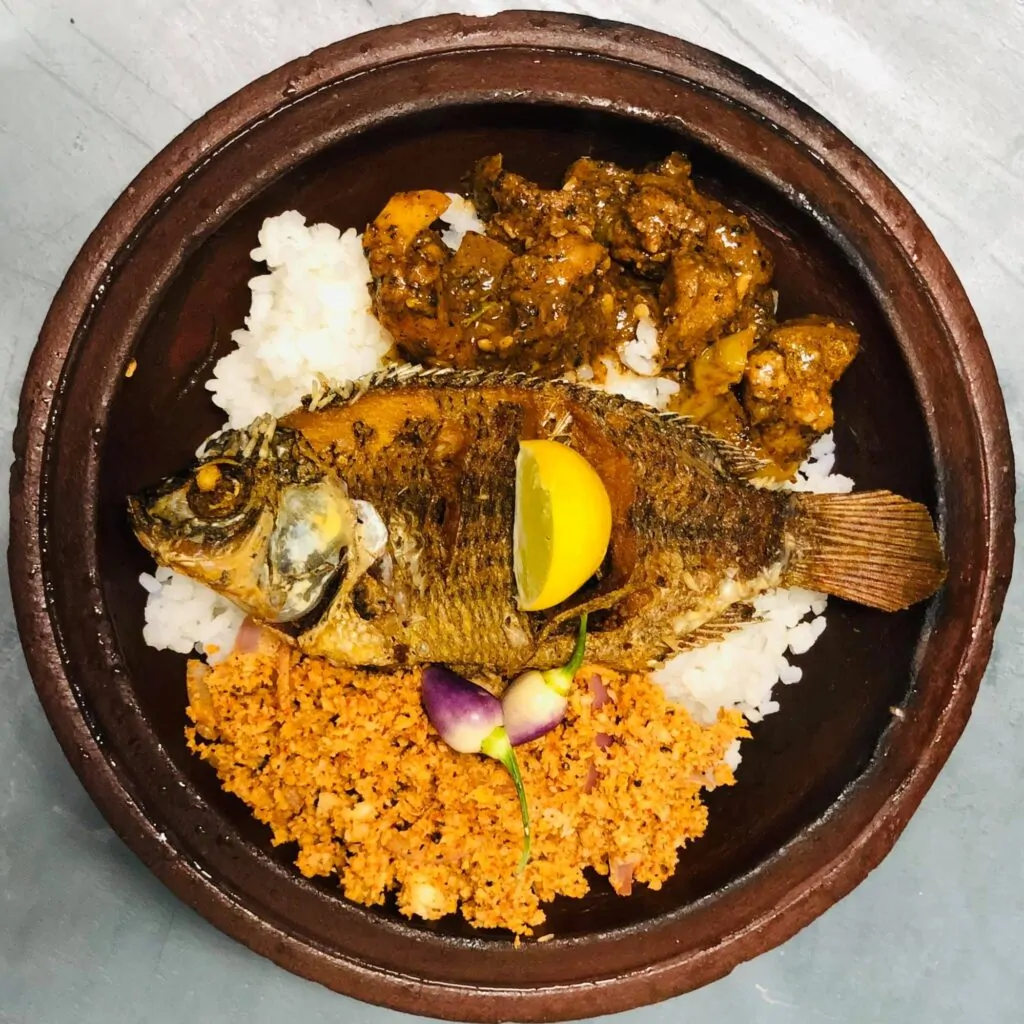
Rice and Curry Dishes
The quintessential Sri Lankan meal, rice and curry is a platter of fragrant rice accompanied by an array of vegetable, meat, and fish curries, sambols (condiments), and pickles. The variety of flavors and textures in this dish is truly remarkable.
Kottu Roti
A popular street food, kottu roti is a stir-fried dish made with chopped roti, vegetables, eggs, and meat or chicken. The rhythmic chopping of the ingredients adds to the excitement of this dish, and the customizable options make it a favorite among locals and tourists alike.
Egg Hoppers
Egg hoppers are crispy, bowl-shaped pancakes with a thin egg cooked at the bottom. They are typically served with coconut sambol and a spicy chili paste, making for a delicious and satisfying breakfast or snack.
Crabs Curry
Sri Lanka’s coastal regions offer fresh and succulent crabs, which are often cooked in a flavorful curry. The combination of spices, coconut milk, and the rich meat of the crab creates a truly indulgent dish.
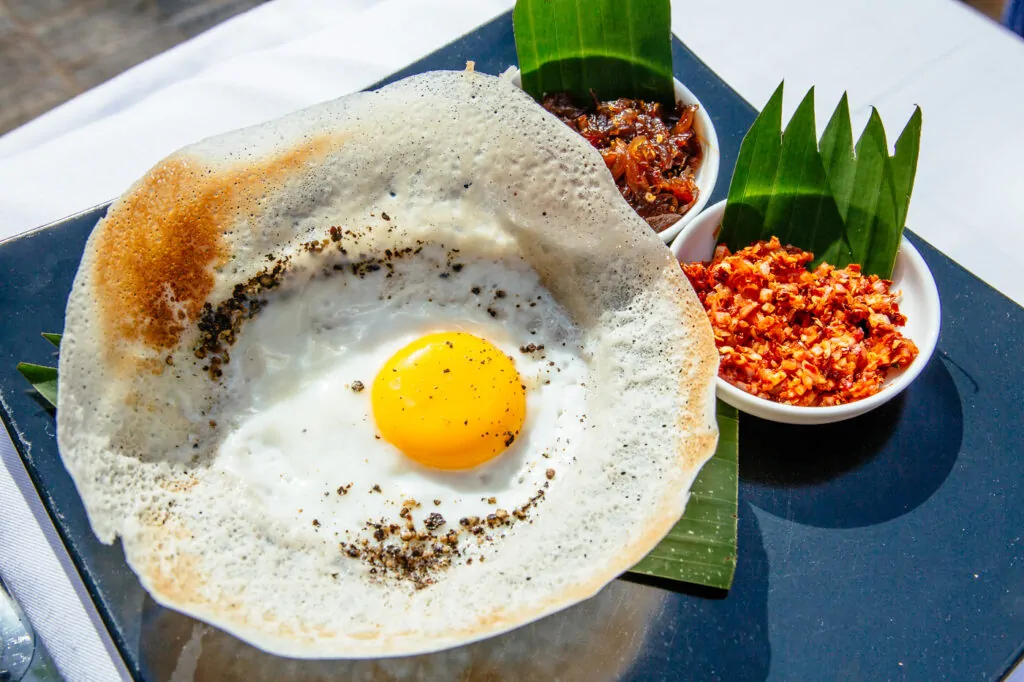
Roti with Mushrooms, Katta Somble, and Polos Curry
This vegetarian option showcases the diversity of Sri Lankan flavors. Soft roti is paired with a savory mushroom curry, a tangy katta somble (a type of sambol made with dried fish), and a sweet and spicy polos (young jackfruit) curry. The combination of textures and flavors creates a delightful culinary experience.
This is just a glimpse into the vibrant world of Sri Lankan cuisine. With each region offering its unique specialties, there is always something new to discover.
WhatsApp us